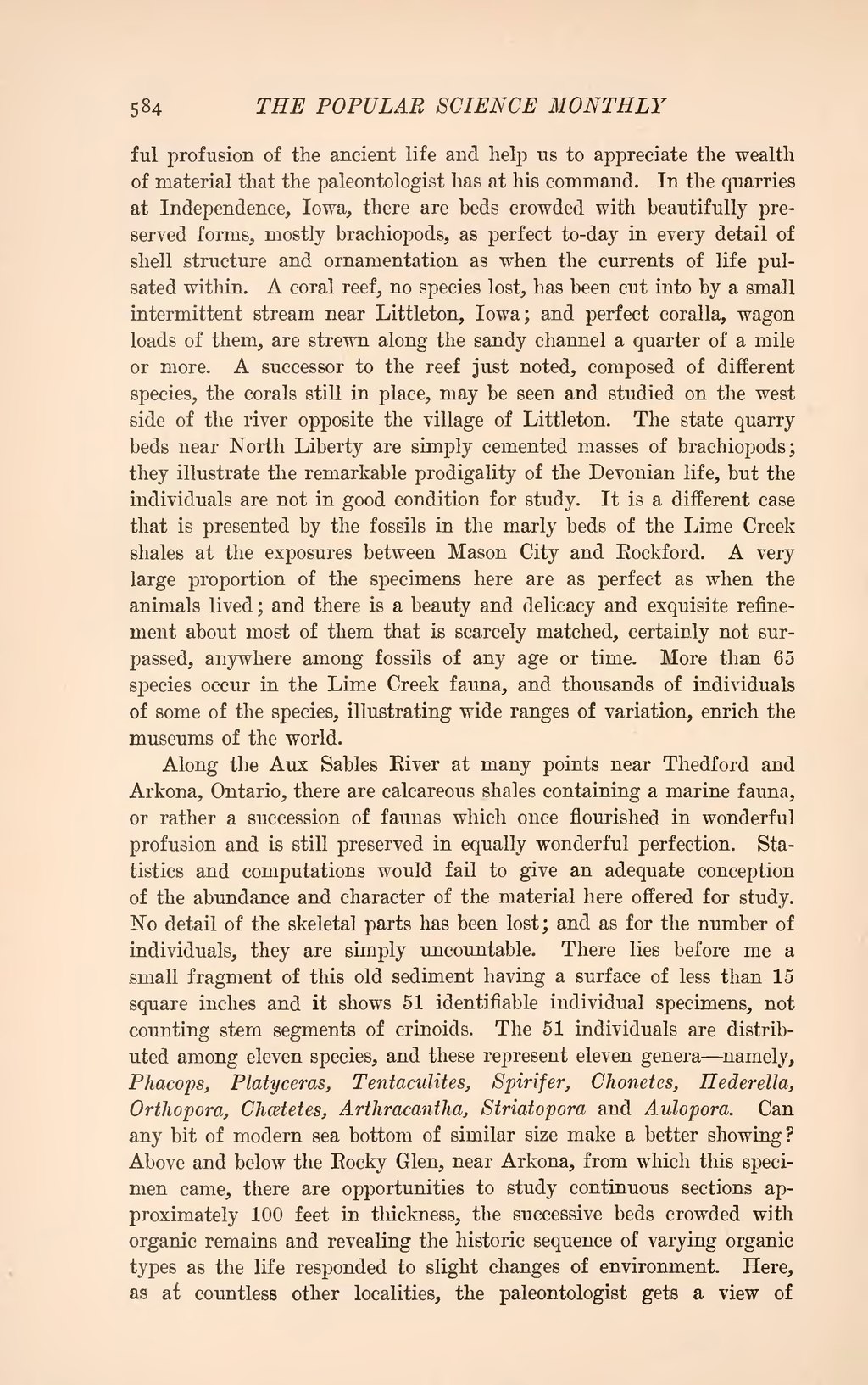ful profusion of the ancient life and help us to appreciate the wealth of material that the paleontologist has at his command. In the quarries at Independence, Iowa, there are beds crowded with beautifully preserved forms, mostly brachiopods, as perfect to-day in every detail of shell structure and ornamentation as when the currents of life pulsated within. A coral reef, no species lost, has been cut into by a small intermittent stream near Littleton, Iowa; and perfect coralla, wagon loads of them, are strewn along the sandy channel a quarter of a mile or more. A successor to the reef just noted, composed of different species, the corals still in place, may be seen and studied on the west side of the river opposite the village of Littleton. The state quarry beds near North Liberty are simply cemented masses of brachiopods; they illustrate the remarkable prodigality of the Devonian life, but the individuals are not in good condition for study. It is a different case that is presented by the fossils in the marly beds of the Lime Creek shales at the exposures between Mason City and Eockford. A very large proportion of the specimens here are as perfect as when the animals lived; and there is a beauty and delicacy and exquisite refinement about most of them that is scarcely matched, certainly not surpassed, anywhere among fossils of any age or time. More than 65 species occur in the Lime Creek fauna, and thousands of individuals of some of the species, illustrating wide ranges of variation, enrich the museums of the world.
Along the Aux Sables River at many points near Thedford and Arkona, Ontario, there are calcareous shales containing a marine fauna, or rather a succession of faunas which once flourished in wonderful profusion and is still preserved in equally wonderful perfection. Statistics and computations would fail to give an adequate conception of the abundance and character of the material here offered for study. No detail of the skeletal parts has been lost; and as for the number of individuals, they are simply uncountable. There lies before me a small fragment of this old sediment having a surface of less than 15 square inches and it shows 51 identifiable individual specimens, not counting stem segments of crinoids. The 51 individuals are distributed among eleven species, and these represent eleven genera—namely, Phacops, Platyceras, Tentaculites, Spirifer, Chonetes, Hederella, Ortliopora, Chætetes, Arthracantha, Striatopora and Aulopora. Can any bit of modern sea bottom of similar size make a better showing? Above and below the Rocky Glen, near Arkona, from which this specimen came, there are opportunities to study continuous sections approximately 100 feet in thickness, the successive beds crowded with organic remains and revealing the historic sequence of varying organic types as the life responded to slight changes of environment. Here, as at countless other localities, the paleontologist gets a view of

